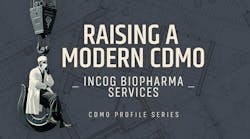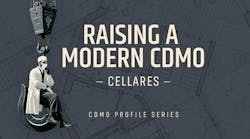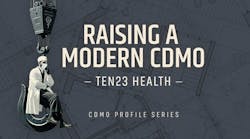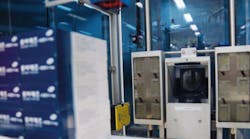It might seem odd to discuss Phase 0, or microdosing, in a drug manufacturing magazine, but a growing number of companies consider these studies as the first step to improving speed to market for any new drug candidate. The concept (sidebar), advanced by FDA over two years ago as part of its new Exploratory IND application option, allows drug companies to bypass some high costs of Phase I testing and to determine earlier which drug candidates are worthy of moving into full-scale clinical testing.
The goal is to reduce the costs involved in R&D, in a business environment where only three out of every 10 biologic drugs (and two out of every 100 small-molecule therapies) actually make it to market. Like 21st Century GMPs and other recent FDA initiatives, it represents an attempt to bring a more scientific, data-driven approach to accelerating development along the Critical Path. Much has been written, both in favor of and against microdosing. But setting its sights firmly on this niche is Xcelience, a company established in Florida two years ago, after a management buyout of Canadian-based MDS Pharma Services’ formulation laboratory.
Zeroing in on Phase 0In microdosing, or Phase 0 trials, a small group of patients (typically seven) are administered very low doses of an active pharmaceutical ingredient to gain a better
|
Its aim is to accelerate the movement of the most promising new drug candidates into human clinical trials and clinical manufacturing and development. Its name, in fact, was based on the idea of accelerating speed to market from a foundation of science. CEO Derek Hennecke says the company does this by applying analytics and materials characterization to its work, from post-discovery through Phase IIa and b clinical trials, including CMC, formulation development and clinical prep. Phase 0 testing offered drug manufacturers a major opportunity, he says.
“Companies could, in theory, move on to clinical studies with a minimal amount of clinical data and 28-day toxicity study results. Companies started looking closely at how they could use the guidance and develop the data required without going into Phase I trials.”
To capitalize on business opportunities, Xcelience invested in Xcelodose 600 S microdosing equipment from Capsugel (Peapack, N.J.). It now claims to be the first contract research and manufacturing company in North America to use the equipment, which works at a high speed using very small quantities of APIs and placing them directly into a capsule, without excipient, to feed into Phase 0 Trials.
“Using this technology, we could gather data on formulations by putting the API directly in the dosage form without doing full-blown formulation development projects,” says VP Randall Guthrie. “Users can put the API in a capsule and conduct parallel studies on excipient compatability and incompatability, and get early pharmacokinetic data.”
Although most large pharma companies have invested in several of these machines, which cost roughly half a million dollars each, they are running full out, and there was a demand for more API in a capsule capacity. Demand is also strong from smaller companies that don’t have the equipment in house. Last year, the company purchased Capsugel’s CFS 1200 to deal with another technical issue plaguing many new drug candidates: insolubility.
The machine, which fills 1200 capsules per hour, allows powders to be placed in two-piece capsules in suspension or emulsion formulas. Xcelience also prides itself on educating clients about the importance of keeping the end in sight, and applying the principles of Quality by Design.
“Although ultimately it is their call as to whether or not to heed this advice, we encourage clients to begin to think in those terms very early in the process,” says Dr. Festus Hanciles, director of Analytical and Preformulation Services. “We suggest that they develop a clear understanding of attributes and characteristics for APIs, and advise them to pay close attention to polymorphs, particle sizes and shapes, hygroscopic properties, and drying and distribution rates.”
The key is establishing a balance between innovation and manufacturability. “It’s expeditious for sponsors to learn whether or not they have a viable drug as early as possible in the process, since development costs are so high,” says Guthrie, “but we don’t want to be overzealous and stop innovation either.”
Process Analytical Technologies (PAT) are important in developing the right mindset for early drug development, says Hanciles. “We’re encouraging this mindset, not only to well-informed sponsors but to those who need help with physical or chemical characterization of candidates,” he notes. “The more light you can shed on new drug candidates, the better you can predict the outcome, and it is best to do this at very early stages.”
Tackling Variability
“Excipient variability is a challenge, even for a company doing early development work,” says Hanciles. “We try to head it off with better analytical tools for identifying variability using Inactively Coupled Mass Spectroscopy (ICMS), triple, quad and other spectroscopic methods to measure unknown peaks.”
The company has also invested in ultra-high-performance liquid chromatography (UHPLC). However, the company also uses such “low-tech” methods of ensuring consistency as identifying and using only the most reliable raw material suppliers. “This trend, and overall collaboration with key vendors will become more important in pharma, as it did in the auto industry in the 1980s,” predicts Hennecke.
The company is not yet availing itself of new Internet-based monitoring methods or other forms of communication with its customers. Hennecke explains, “Our key is to stay as close as possible to our sponsors. We’re in the same time zone as most of them and right near an airport.” This situation may soon change, though. The company has just been audited and approved for work with drug companies selling in Europe.





